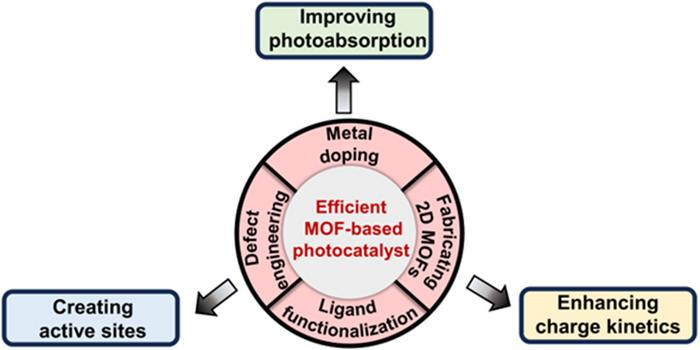
The ever-increasing global energy shortage and the worsening of the environment ask urgently the substitution of conventional fossil-based energy by a green and sustainable energy. As one of the renewable energy sources, solar energy is clean and abundant and can be a satisfying option. Photocatalysis is a highly promising technology that effectively transforms solar energy into chemical energy. This technology has numerous applications, such as water splitting, CO2 reduction, organic syntheses, and pollutant degradation.
The ever-increasing global energy shortage and the worsening of the environment ask urgently the substitution of conventional fossil-based energy by a green and sustainable energy. As one of the renewable energy sources, solar energy is clean and abundant and can be a satisfying option. Photocatalysis is a highly promising technology that effectively transforms solar energy into chemical energy. This technology has numerous applications, such as water splitting, CO2 reduction, organic syntheses, and pollutant degradation.
Although inorganic semiconductors are the initial and the most widely studied photocatalysts, metal-organic frameworks (MOFs), a class of porous crystalline material constructed from metal ions/clusters interconnected with multi-dentated organic ligands, are recently emerging as a new type of promising photocatalysts. The easily regulated composition and structure of the MOFs due to their high structure inclusiveness enables MOFs to be an ideal model system to explore the composition-structure-activity relationship in a MOF-based photocatalytic system, which can provide guidance for rationally designing and developing photocatalysts at the atomic level.
A number of excellent reviews on MOF-based photocatalysis have already been published during the past decade. However, most of them focus on different photocatalytic materials and the reactions that they can be applied in. Considering that MOF-based photocatalysis has burgeons rapidly during the past several years, the summary of the various strategies to improve the performance of MOF-based photocatalytic materials is indispensable for the future development of highly efficient MOF-based photocatalysts.
Recently, a research team led by Prof. Zhaohui Li and Prof. Ling Wu from Fuzhou University, China, summarized the strategies already reported in the literature to improve the performance of MOF-based photocatalytic materials. In this review, four structural engineering strategies to improve the efficiency of MOF-based photocatalysis have been summarized. These strategies include metal doping, ligand functionalization, the fabrication of ultrathin 2D MOFs, and defect engineering. These methods aim to enhance light absorption, improve charge separation and transportation, and create more catalytic active sites. Personal opinions on the opportunities, challenges, and developing trends of MOF-based photocatalysis were addressed. This review aims to provide guidance for the rational development of advanced MOF-based photocatalysts by elucidating the inherent relationship between their structural properties and catalytic activity. The review was published in Chinese Journal of Catalysis (https://doi.org/10.1016/S1872-2067(23)64556-5).
###
About the Journal
Chinese Journal of Catalysis is co-sponsored by Dalian Institute of Chemical Physics, Chinese Academy of Sciences and Chinese Chemical Society, and it is currently published by Elsevier group. This monthly journal publishes in English timely contributions of original and rigorously reviewed manuscripts covering all areas of catalysis. The journal publishes Reviews, Accounts, Communications, Articles, Highlights, Perspectives, and Viewpoints of highly scientific values that help understanding and defining of new concepts in both fundamental issues and practical applications of catalysis. Chinese Journal of Catalysis ranks among the top one journals in Applied Chemistry with a current SCI impact factor of 16.5. The Editors-in-Chief are Profs. Can Li and Tao Zhang.
At Elsevier http://www.journals.elsevier.com/chinese-journal-of-catalysis
Manuscript submission https://mc03.manuscriptcentral.com/cjcatal
Journal
Chinese Journal of Catalysis
DOI
10.1016/S1872-2067(23)64556-5
Article Title
Strategies to engineer metal-organic frameworks for efficient photocatalysis
Article Publication Date
20-Dec-2023
- SEO Powered Content & PR Distribution. Get Amplified Today.
- PlatoData.Network Vertical Generative Ai. Empower Yourself. Access Here.
- PlatoAiStream. Web3 Intelligence. Knowledge Amplified. Access Here.
- PlatoESG. Carbon, CleanTech, Energy, Environment, Solar, Waste Management. Access Here.
- PlatoHealth. Biotech and Clinical Trials Intelligence. Access Here.
- Source: https://bioengineer.org/strategies-to-engineer-metal-organic-frameworks-for-efficient-photocatalysis/
